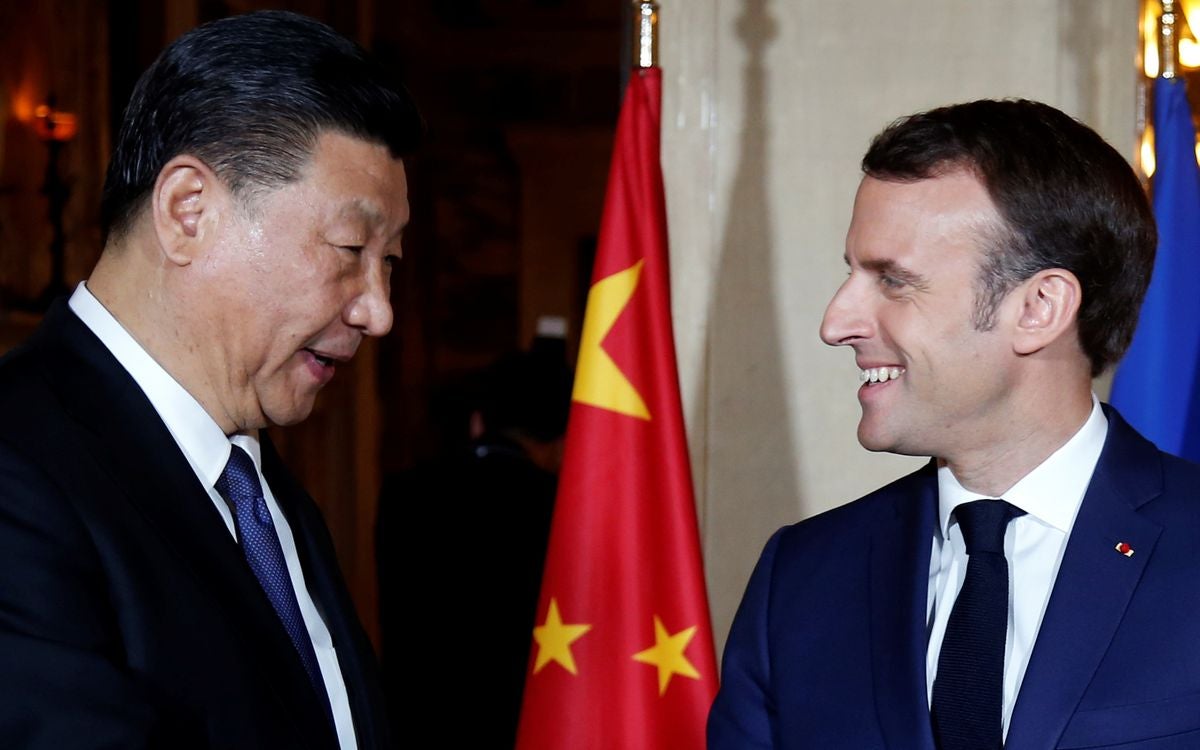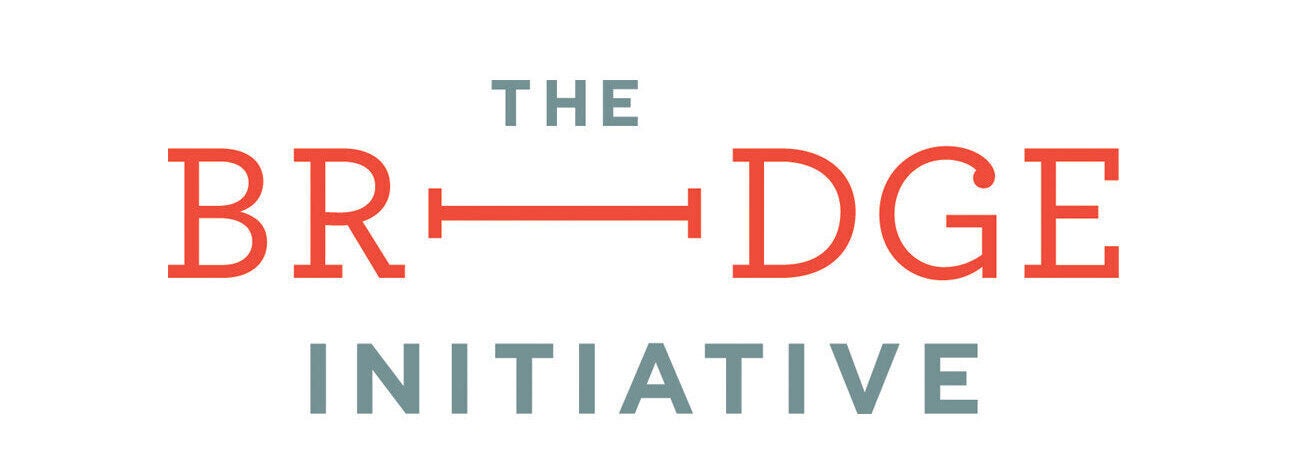
(REUTERS/Jean-Paul Pelissier/Pool/File Photo)
Secularism and sinicization: two concepts used to eradicate Muslim identity
In 2021, a European Muslim youth led organization created a campaign to counter discrimination and promote pluralism by showcasing a European woman wearing a hijab. The ad highlighted that freedom means having the ability to choose what to wear. The project centered on promoting equality and freedom, ideals that Europeans hold dearly, and fighting the social ill of Islamophobia that has been plaguing the continent. It was confusing then to learn that the French government found the campaign offensive. As a result, the Council of Europe, an intergovernmental human rights organization which publicized the campaign, ended up kowtowing to the French government’s complaints and removed the tweets associated with the campaign.
This 2021 episode is just one of countless incidents demonstrating France’s discomfort and aversion to the hijab and visible expressions of Muslim religiosity. Many in the Republic have viewed Islam and its practices as antithetical to the country’s secular values. French politicians and media pundits have regularly opined that Islam and expressions of Muslim identity are in opposition to French culture, and more often than not it’s been Muslim women and the hijab that have been the target of this outrage.
The French aren’t alone in their obsession to curb expressions of Muslim identity. Efforts to eliminate the presence and observance of Islam is a disturbingly normal practice across the world, from numerous hijab and niqab bans across the European continent to razing of mosques and renaming of towns in Prime Minister Narendra Modi’s India. Over twenty years after the September 11th attacks, Islamophobia has become a globalized phenomenon. Muslims remain acceptable targets of both harmful rhetoric and policy, practices that have been normalized as many view Islam and Muslims as the perpetual dangerous and foreign “other.” It has meant that anything associated with Islam and Muslims, especially visible markers, are viewed as a threat to the non-Muslim community.
While western nations such as France have taken legislative measures restricting individual’s civil rights, China is carrying out a repressive campaign to “neutralize” the threat of the Muslim “other.” In the semi-autonomous north-western region, referred to by China as ‘Xinjiang’ (new territory), Beijing has implemented a range of shocking Islamophobic policies to eradicate Uyghur Muslim culture and identity. The Chinese Communist Party’s (CCP) undertaking in the occupied Uyghur homeland is justified through the War on Terror discourse, a set of arguments built upon the Islamophobic notion that Muslims are inherently violent, predisposed to terrorism, and thus any and all action is justified in an effort to wipe out the threat. Authorities have claimed Uyghur Muslims are prone to “extremism” and are suffering from the “ideological illness” of Islam.
At their core, Beijing’s statements defending their genocidal measures against Uyghurs are built upon the same beliefs that underlie western talking points when it comes to restricting the rights of their Muslim citizenry. Some, like France, are even adopting China’s language, talking about the need to create a ‘French Islam,’ a state-approved version of a faith. For a country that claims to uphold secularism, France sees no contradiction in its attempted control of an entire faith group.
The CCP promotes its anti-Muslim policies under the notion of ‘sinicization,’[1] a concept introduced by the party in 2015 “into the official government lexicon, in which they called on Muslim, Buddhist, and Christian leaders to fuse their religions with Chinese socialist thought.” In an effort to counter “hostile forces” that utilize religion to engage in “destructive activities,” the government introduced this idea to justify measures aimed at constructing a state-approved religion. France’s approach to rendering five percent of its population as second-class citizens is justified in the name of “secularism” or “laicite.”[2] The weaponization of these two “s”-worded concepts (sinicization and secularism) has put in motion practices that aim to create the ideal citizen, one that upholds the nation and embodies the physical appearance, attitudes, practices, and values of the majoritarian population: the Han in China and the racialized white secular individuals in France.
Over the past few years, French President Emmanuel Macron has frequently targeted Islam and Muslims. In 2020, he sparked backlash after claiming that Islam is in a “crisis all over the world,” while unveiling a plan to tackle “Islamist radicalism.” He has described French Muslims as engaging in “separatism,” and instituted new measures, such as the anti-separatism bill and shutting down of mosques, to clamp down on this supposed threat and strengthen secularism in the country. Macron has repeatedly stated that a French Islam is needed, a government approved version of the faith. He has defended his rhetoric and policies by claiming that such measures are needed to integrate the country’s Muslim minority and fight “Islamist extremism.” The problem with the first objective of ‘integrating’ is that in reality the word ‘assimilating’ better describes France’s ambitions. Integration is a two-way process, a blending of cultures that makes room for an individual’s identity; assimilation on the other hand is one way and requires losing one’s identity and fully adopting that of the predominant group in the country. Additionally, Macron’s second objective of fighting “Islamic extremism,” only reinforces the discriminatory view that Muslims who are not secular and hold onto visible Muslim markers of identity (beard, hijab, etc.), are resisting state policies and are thus “extremists” who pose a threat to the state.
In both China and France, there’s been growing action to erase Islam and Muslims from the public space. The most blatant example of this has been the shutting down of mosques. In France, authorities have defended these measures by claiming that the religious spaces are engaged in “separatist” activity, and are actively promoting views that are against the values (always undefined and vague) of the Republic. In China, mosques have not only been shut down; they’ve been completely destroyed. Some have had minarets removed, others have been redesigned as cafes, and for those that remain open, they’ve been equipped with surveillance measures.
Both China and France have defended their measures against Muslims as necessary for the security of the country and for the prosperity of society. They’ve framed their policies in a paternalistic manner: these measures are needed to make Muslims good citizens. Therefore, Muslims must be rehabilitated or reformed to be accepted into the nation. They must publicly conform to the majoritarian views and anything that is contradictory to this is viewed as a fracture in the unity of the country.
While China’s current campaign is on the extreme end of a spectrum of violence, namely that it’s a genocide aimed at eradicating Uyghur Muslim culture and identity, France’s structural discrimination of its Muslim citizens carries similar rhetoric as it views the nearly six million French Muslim citizens as potential threats that need to be rehabilitated and reformed.
[1] In 2015, Party officials introduced the term “sinicization” into the official government lexicon, in which they called on “Muslim, Buddhist, and Christian leaders to fuse their religions with Chinese socialist thought.” Any sign of what the Chinese government views as resistance, in this case the mere expression of a different identity to the Han majority, is viewed as a threat not only to the stability of the region but also to the existence of the state itself.
[2] “What began as a legal measure to keep religion out of state affairs has metastasized into open religious bigotry against Muslims.” https://berkleycenter.georgetown.edu/posts/the-weaponization-of-laicite

 Search
Search